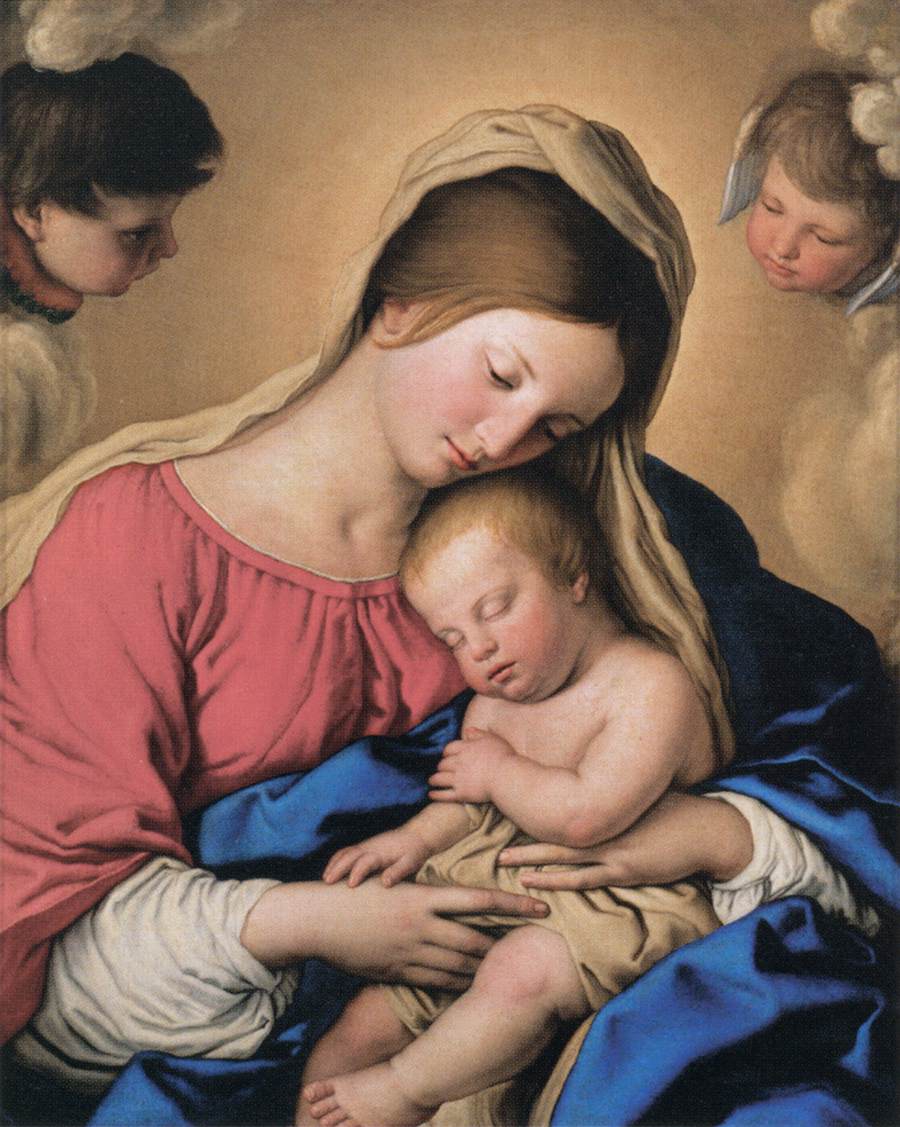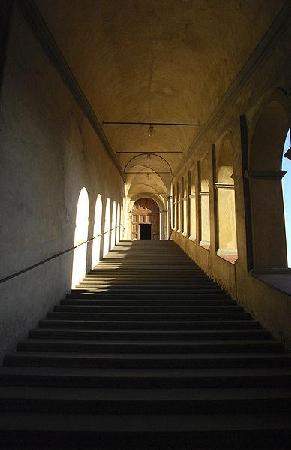Here is a homily by Fr. Eric M. Andersen, Sacred
Heart in Gervais, for August 26th, 2012
Dominica
XXI Per Annum, Anno B
Our Blessed Lord has just
finished telling his disciples that unless they eat His flesh and drink His
blood, they have no life in them. His flesh is true meat, and His Blood is true
drink. This is too much for some of them. In our Gospel today, they say, “this
saying is hard; who can accept it?” As a result of this, many of his disciples
returned to their former way of life and no longer accompanied Him (John 6:66).
They looked directly into the face of God and rejected Him, turning their backs
on Him and walking away. The verse of this scripture is John six, verse sixty
six. That is: John six, six six. This is the number of the antichrist, and it
is at John six, six six that many of Jesus’ disciples turned away and went back
to their former way of life.

It is understandable that
they turned away. It seemed unbelievable that He was asking them to eat His
flesh and drink His blood. But Jesus did not shy away from telling his
disciples this truth, even when He knew that many of them would misunderstand
Him and would even turn away from Him. That is authentic love. Isn’t that the
way God loves us? He gives us everything, provides for us, and teaches us what
He wants from us and how He wants us to live our lives. Then He allows us to
freely choose for Him or against Him. But He does not abandon us. Neither does
He shy away from the hard truths because the Truth sets us free. No, He allows
us to struggle. He allows us to question. He allows us to even reject Him. But
He does not reject us. We have the choice to make each and every day until our
last dying breath. But when we die and the choice has been made, either for Him
or against Him, He will grant us our choice.
So our Lord in the Gospel
allowed many of His disciples to go back to their former ways of live and no
longer accompany Him. Some people leave the Catholic Church because it holds
firm to the hard sayings of Jesus. But if we really explore these hard sayings
of Jesus, and we surrender to them, we find that they are actually not hard. We
find that these hard sayings are the ones that are truly life giving. We find
that it becomes harder not to follow the so-called “hard sayings.” But if we
reject the hard sayings and leave, then we miss the opportunity for God to fill
our lives with true and abundant joy in living out the faith.

One of these hard sayings
is about the Real Presence in the Eucharist. Many Christians do not believe in
the Real Presence of Jesus Christ, Body, Blood, Soul, and Divinity, in the Sacrament
of the Holy Eucharist. Even among Catholics it is surprising how many do not
believe in the Real Presence. According to the CARA research group out of
Georgetown University, as of 2010, 52% of American Catholics believe that the
Catholic Church teaches that the Bread and Wine are symbols of Christ’s Body
and Blood. Isn’t that strange that so many Catholics would think that? The
Church does not teach that. The bread and wine are not symbols of
Christ’s body and blood. After the words of consecration, the bread is no
longer bread. It looks like bread but it is no longer bread. It is not a symbol
of Christ’s body. It is Christ’s Body. After the words of consecration, the
wine is no longer wine. It looks like wine, smells like wine, and tastes like
wine. But it is no longer wine. It is Christ’s Blood.
When we first encounter the
Eucharist, that is all we know. All we know in the beginning is that “this is
Jesus.” That is the most important thing. But when we begin to ask how
this is Jesus, then our minds want to understand how it can look and
taste and feel like bread, but not be bread. How can this look and taste
and smell like wine but not be wine? The answer is that God changes it from
bread into His Body.
That should not be so hard
for us to understand. After all, how is it that a human soul is created? We
know that when a child is conceived, a human soul is created from that instant,
and that baby’s soul will live forever from that moment forward. It is always
an act of creation on the part of God. But then God changes that soul at the
moment of baptism. Can we see that change? A person looks exactly the same
after baptism as before, but there is quite a change! That person is completely
different after baptism because the Holy Spirit is dwelling within him. On the
outside, we cannot see that merely by looking at him. God has changed that soul
at the words of baptism and the pouring of water.
It is a similar thing when
the bread and wine are consecrated and they change from one thing to another
thing. We cannot see the change, because externally what was once bread still
looks like bread, but it has changed. It is no longer bread. It has changed
from one thing to another thing. To understand this more fully, we need to look
at what bread is and what Christ is.
First the bread: What is
bread? Bread is made of wheat which is ground into some sort of flour, mixed
into a dough, and then baked. That is the substance of what it is to be bread.
But bread can have many various qualities and still be bread. For instance, it
can either be a wafer or a loaf. It can be leavened or unleavened. It can be
heavy or light, dark or brown or white. But regardless of those changing
accidental qualities, it is still bread.

Now what is Christ? Jesus
Christ is the second person of the Trinity. He is the eternal Son of the
Father, equal to the Father, consubstantial to the Father. That means that He
is of the same substance as the Father. We know that God is pure Spirit. That
is His substance. But God is not limited to being a pure spirit. God can take
on any kind of body. So what kind of body would God take on? Before Jesus was
born of the Virgin Mary and became man it was blasphemy to even think that one
could picture God. He could not be represented in artwork because to do so would
be idolatry. Imagine that someone might point to a baby in his mother’s arms
and say: “look! That baby is God.” But God manifested Himself in that way to
us. He descended from heaven by the power of the Holy Spirit was made incarnate
in the womb of the Blessed Virgin Mary. That was an act of God. The substance
of God took on the qualities of his creature man. That did not decrease Jesus’
being as God. His substance as God is unchanged whether He takes on the
accidental qualities of a man or a piece of bread.
We also understand in this
that God is omnipresent. In other words, He did not come down from heaven,
leaving heaven, in order to be conceived in the womb of Mary. He came down,
yes, but He never left heaven. He is not limited by space and time. That is why
God can be here on this altar and in this tabernacle, and on all the
altars and tabernacles around the world and still be in heaven all the
while. We do not say that God leaves heaven or comes down from heaven to
come into the Eucharistic species. No, we merely say that at the words of
consecration: “This is my Body” and “This is my Blood,” Jesus Christ is fully
there and that the bread and wine are no longer. That is an act of God. It is a
change of substance that the Church calls transubstantiation.
At first this seemed like a
hard saying and many of His disciples left Him to go back to their former ways
of life. But those who stayed discovered this hard saying to be a true source
of abundance and joy in life. Those who know Jesus in the Eucharist would never
leave Him for anything.

























